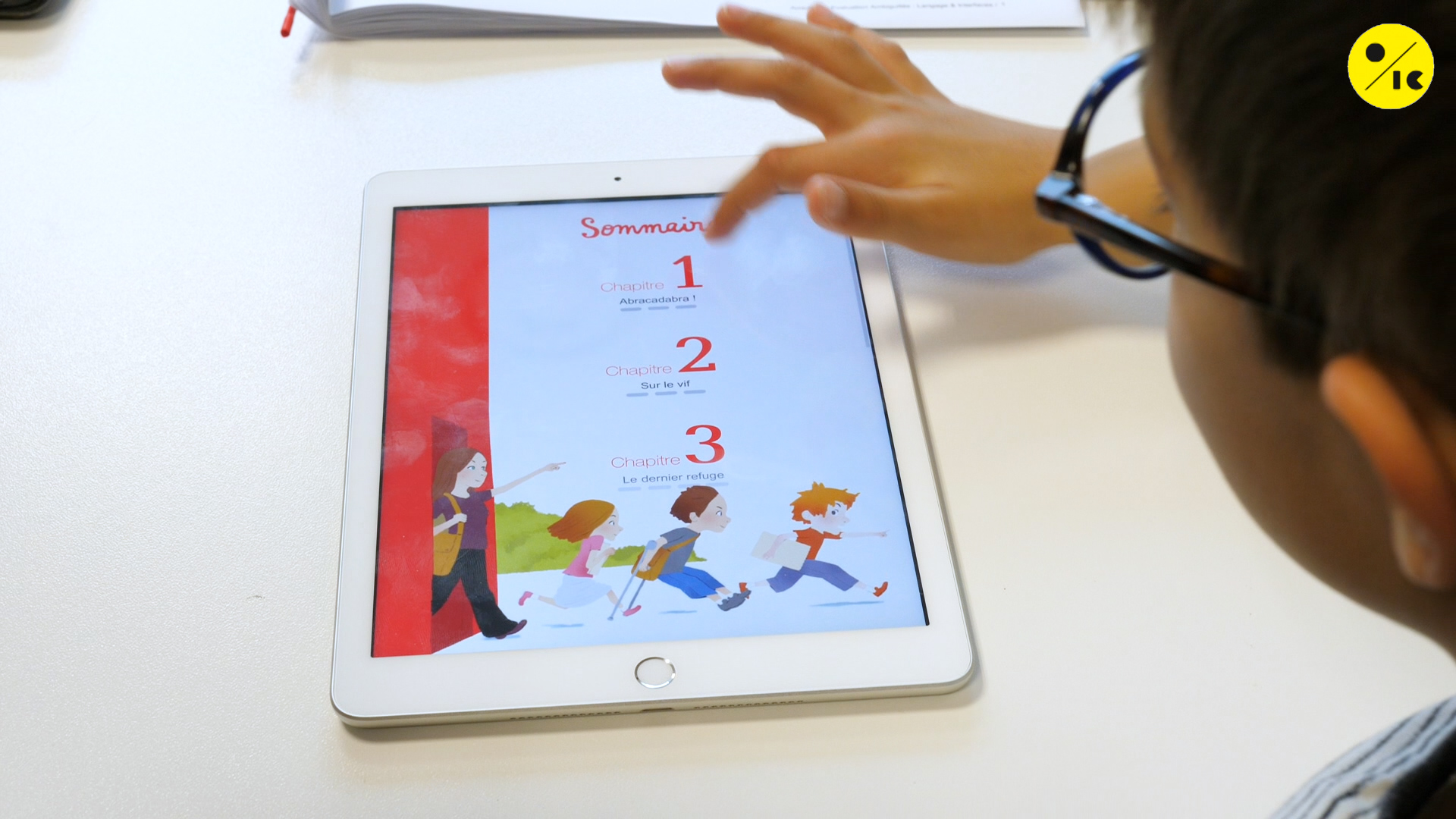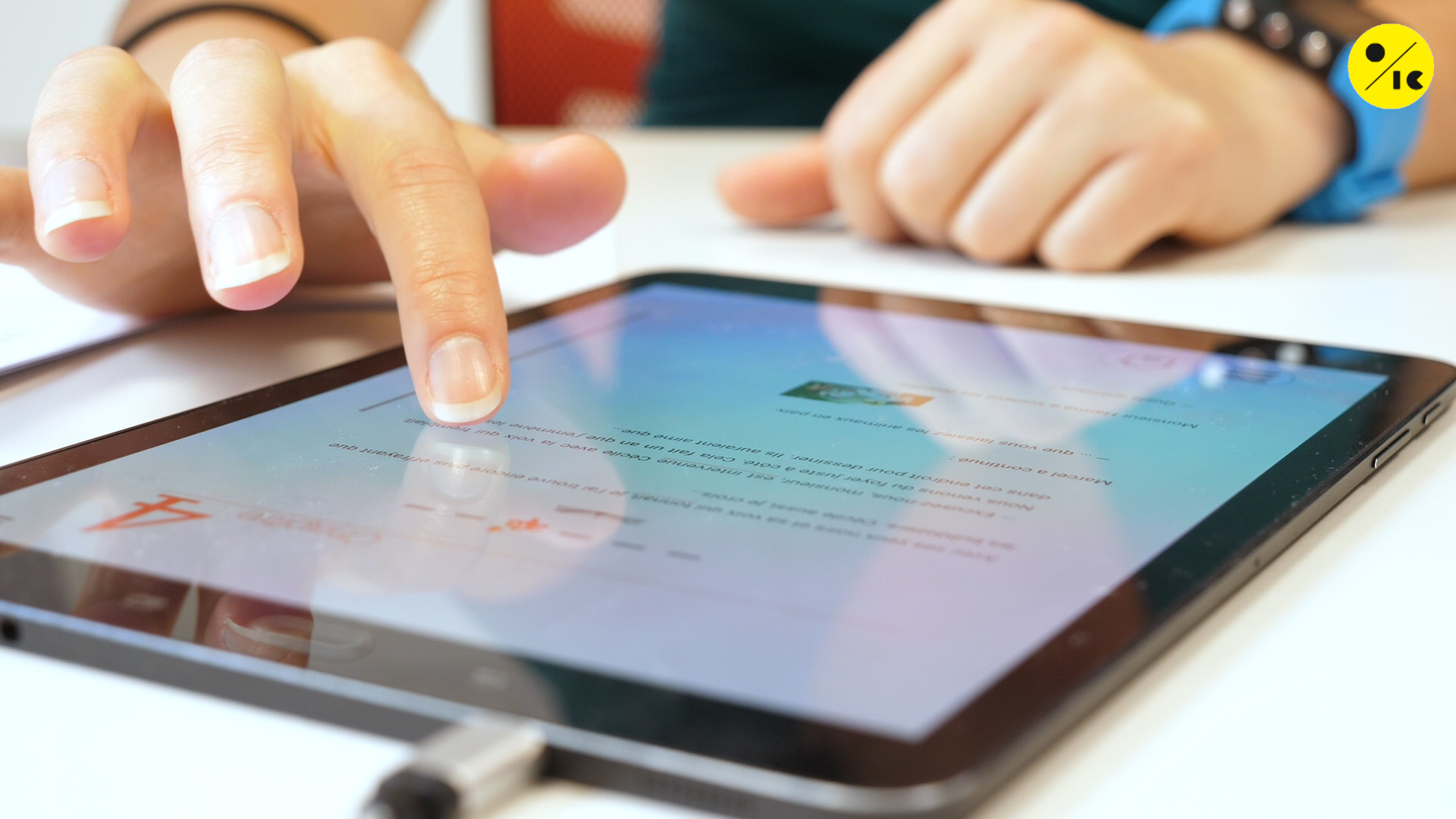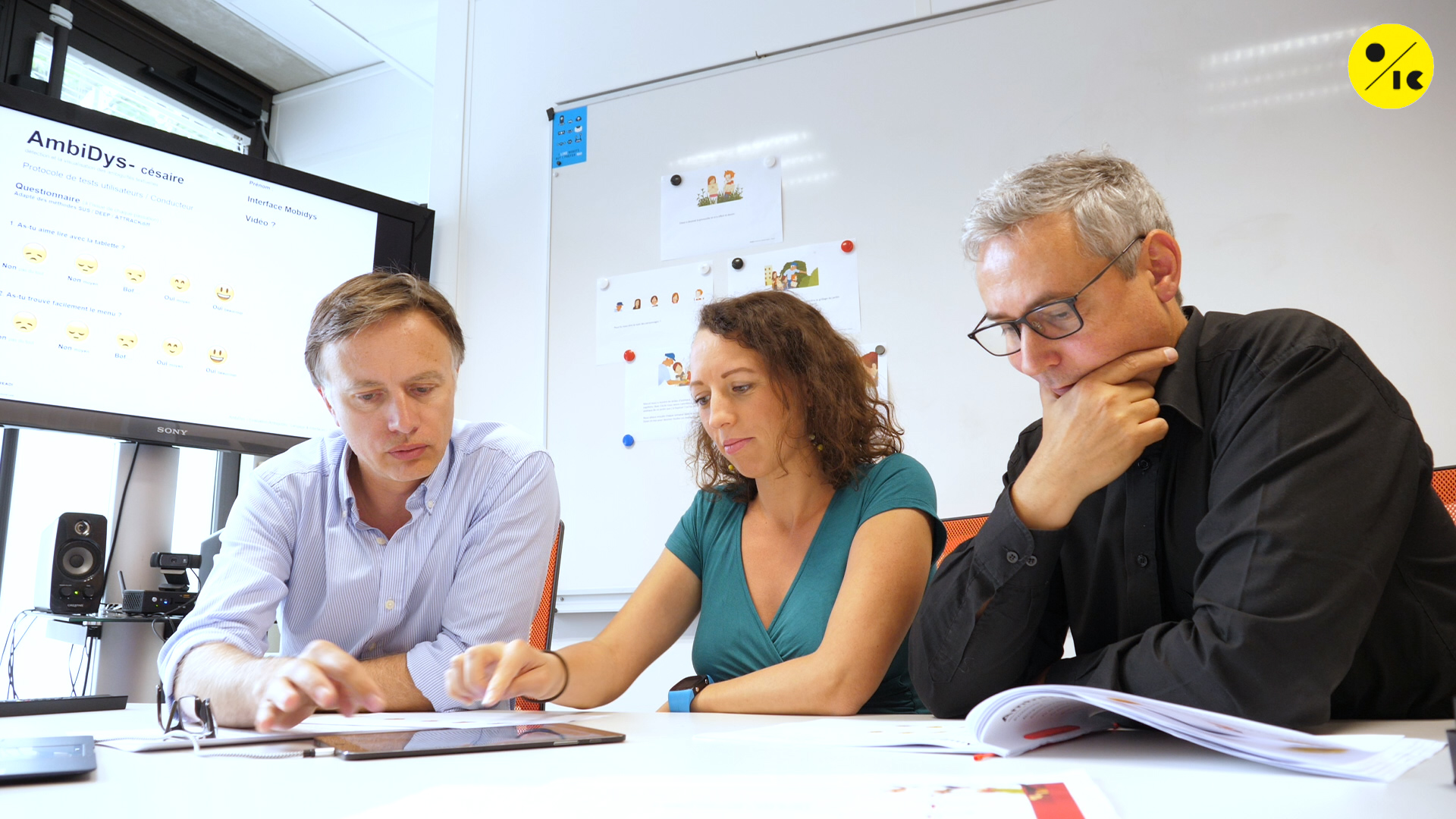
AmbiDYS is a research project and an application for touch tablets in the development phase. It detects the textual ambiguities that could cause problems for the child (for example, the pronouns ‘he’, ‘she’ or ‘it’ when the child may not know what these pronouns refer to in the story).
The project brings together research in computer science (LS2N) on language processing and detection of textual ambiguities, and research in design (Human Machine Design Lab, École de Design Nantes Atlantique) for the creation and evaluation of the interface.
Research in automatic language processing
The AmbiDYS e-book must be able to integrate methods equivalent to those of speech therapists. It is based on artificial intelligence technologies to help dyslexic children with their reading.
Within the LS2N, the TALN (Traitement Automatique du Langage Naturel, automatic natural language processing) team is in charge of the project. It works on robust text analysis methods adaptable to the diversity of written language data expressed through new communication media such as blogs, social networks and forums, coupled with other media, or expressed in different languages.
The challenge for the TALN team, which usually works on simplifying the ambiguities detected by modifying the initial text, was to focus here on the identification of anaphora qualified as “difficult”. This can be due in particular to the fact that the referent is located several sentences before the associated pronoun (and not in the previous sentence), or that there are several candidate referents, especially among the main characters of the book. This identification of difficult anaphora was a novelty for the laboratory and is still an unresolved problem.
Interface research and design for all
The interface of this tool must be able to adapt to all uses and all contents, erasing reading difficulties by organizing the text automatically so that, for example, the words of a same unit of meaning are not separated.
For Grégoire Cliquet, Director of the Human Machine Design Lab, the inclusive approach of the project is quite rare, the end user (the child) being at the centre of the reflections and objectives. The concept of design for all is applied. The goal is that the application’s interface should be usable by everyone, regardless of their abilities, age or level of culture. It is a question of avoiding stigmatizing or excluding anyone.
A cross-cutting project, combining science and design for the benefit of a finished product
For Solenn Quiniou, Senior Lecturer at the University of Nantes (LS2N), the school/laboratory/company partnership makes the research project both atypical and exciting. Indeed, it is a question of working on a finished product that will be marketed and deployed to the user, with the support of schools and colleges.
Accompanied by speech therapists, the last phase of testing aimed at evaluating the book’s handling interface in order to validate its ergonomics and its accessibility for dyslexic users.
Multiple development perspectives
There are several opportunities for AmbiDYS’s different partners:
- MOBiDYS is currently focusing the deployment of the application on middle school-level books for which there is strong parental demand. Contrary to primary school where many adapted books already exist, they are much rarer for middle school students. The creation of a consortium including an industrialist from the sector is envisaged in order to find a concrete application in the book-publishing chain.
- Finally, the LS2N and the École de Design are preparing a broader research project, targeting all learners of French (children and adults) and thus the texts studied will no longer be exclusively youth texts



